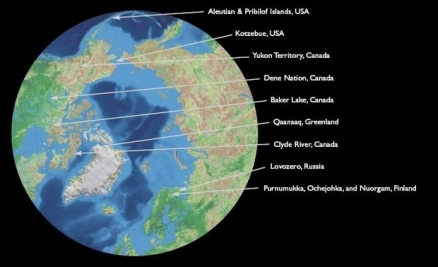The Changing Arctic: Indigenous Perspectives
This is Chapter 3 of the Arctic Climate Impact Assessment
Lead Authors: Henry Huntington, Shari Fox; Contributing Authors: Fikret Berkes, Igor Krupnik; Case Study Authors are identified on specific case studies; Consulting Authors: Anne Henshaw,Terry Fenge, Scot Nickels, Simon Wilson
We cannot change nature, our past, and other people for that matter, but we can control our own thoughts and actions and participate in global efforts to cope with these global climate changes.That I think is the most empowering thing we can do as individuals. George Noongwook, St. Lawrence Island Yupik, Savoonga, Alaska, as quoted in Noongwook, 2000
Summary
Indigenous peoples in the Arctic have for millennia depended on and adapted to their environment.Their knowledge of their surroundings is a vital resource for their well-being.Their knowledge is also a rich source of information for others wishing to understand the arctic system. Many of the aspects of climate change and its impacts considered in this chapter are also considered in other chapters.To avoid excessive disruption to the flow of the text, cross-references are included only where other chapters contain extended discussion or additional material.Within the context of climate change, indigenous observations and perspectives offer great insights not only in terms of the nature and extent of environmental change, but also in terms of the significance of such change for those peoples whose cultures are built on an intimate connection with the arctic landscape.
This chapter reviews the concept of indigenous knowledge, summarizes those indigenous observations of environmental and climatic change that have been documented to date, and presents a series of case studies, largely from hunting and herding societies, examining the perspectives of specific communities or peoples. Although idiosyncratic, the case studies each attempt to convey the sense of how climate change is seen, not in the form of aggregate statistics or general trends, but in specific terms for particular individuals and communities. The case studies provide the basis for a discussion of resilience, or protecting options to increase the capacity of arctic societies to deal with future change, and a review of further research needs.
The observations and case studies contain some common themes. One such observation is that the weather has become more variable and thus less predictable by traditional means. Social changes, such as less time spent on the land, may influence this observation, but there are climatological implications that merit further study. In terms of perceptions of the significance of climate change, there are few, if any, areas where climate change is regarded as the most pressing problem being faced. Nonetheless, most arctic residents are aware of climate change, have experience of the types of changes being seen and anticipated, and are concerned about the implications for themselves, their communities, and the future.
Several of the general conclusions drawn in this chapter are likely to be applicable to all communities affected by climate change, whether the impacts are on balance beneficial or harmful. Climate change is not an isolated phenomenon, but one that is connected to the web of activities and life surrounding indigenous peoples.Thus, it must be understood and assessed in terms of its interactions with other phenomena and with current and future societal and environmental changes. Responses to climate change will not be effective unless they reflect the particular circumstances of each place. Increasing resilience is a useful way to consider the merits of various response options, which are best developed and evaluated iteratively to promote adjustment and improvement as experience and knowledge increase. Indigenous perspectives on climate change offer an important starting point for collaborative development of effective responses.
3.1. Introduction (The Changing Arctic: Indigenous Perspectives)
3.2. Indigenous knowledge
3.3. Indigenous observations of climate change
3.4. Case studies (The Changing Arctic: Indigenous Perspectives)
3.4.1. Northwest Alaska: the Qikiktagrugmiut
3.4.2. The Aleutian and Pribilof Islands region, Alaska
3.4.3. Arctic Athabaskan Council: Yukon First Nations
3.4.4. Denendeh: the Dene Nation’s Denendeh Environmental Working Group
3.4.5. Nunavut
3.4.6. Qaanaaq, Greenland
3.4.7. Sapmi: the communities of Purnumukka, Ochejohka, and Nuorgam
3.4.8. Climate change and the Saami
3.4.9. Kola: the Saami community of Lovozero
3.5. Indigenous perspectives and resilience
3.6. Further research needs
3.7. Conclusions (The Changing Arctic: Indigenous Perspectives)
